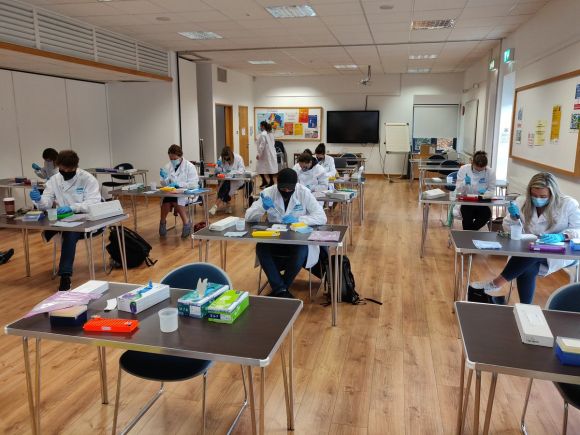In this monthly feature, the Program Office highlights strategies different sites are using to scale for depth, spread, shift, and sustainability. In this final installment, we focus on ABE program sites using promising scaling strategies for sustainability.
As Cynthia Coburn observed, any change initiative is meaningless unless it takes root and has impact over time. For change to be sustained, there must be systemic supports in place at multiple levels that ensure that programming can be maintained despite shifts in funding, leadership, or educational trends. Here are some examples of ways in which ABE program sites have worked toward systemic support for their local programming.
ABE Ireland sustains their programming through robust and ongoing partnerships with several key organizations in the local area. Partnerships with entities like Drumcondra Teaching Education Centre (DTEC), which supports local distribution centers, keep the central program site from being overtaxed, whereas partnerships with local teacher preparation and doctoral programs enable the site to develop a pipeline of early-stage educators who can promote the program more widely.
ABE San Francisco Bay Area has developed a wide-ranging network of teachers and schools that can support kit dissemination and storage beyond the capacity of the immediate program site. In two districts, a lead teacher or district science supervisor receives and stores all the consumables for ABE teachers in their district and arranges individual pick-ups with them. Los Altos High School has purchased a -80°C freezer, and has volunteered to store plates and cells short term for teachers in their area.
ABE United Kingdom has continued to extend the program’s infrastructure so that it is more distributed (shift) through school mini-hubs and teacher and/or technician facilitators. The site also regularly reviews their professional learning workshops to ensure they reflect changes in the national curriculum and examination syllabi so that participating teachers can be confident that materials and activities match these specifications.
As these few examples demonstrate, a central characteristic of effective sustainability strategies is that supports must be multifaceted and occur in more than one domain. The development and implementation of innovative strategies like these, along with countless others made by the ABE community, are the reason the ABE program continues to grow and thrive even under the most adverse circumstances.
Want to learn more about different approaches to scale or discuss integrating scale strategies into your grant proposals? Contact Jessica Juliuson at jjuliuson@edc.org.
